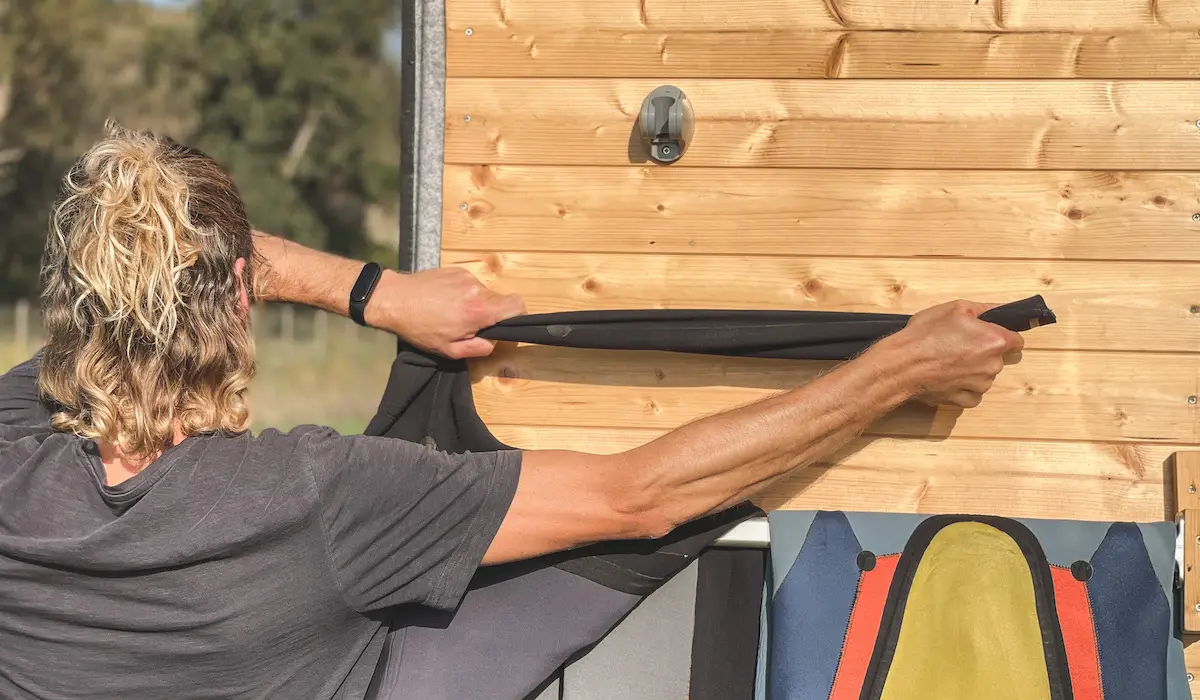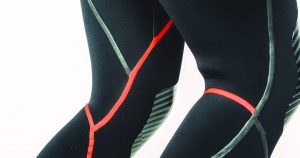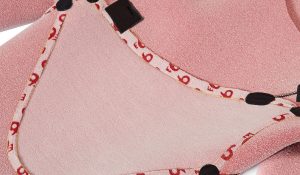Yes, a wetsuit made of neoprene does stretch. Wetsuits are designed to be flexible and stretchy, allowing you to move more freely and effortlessly in the water. The elasticity also makes it easier to put on the wetsuit. After some time the neoprene will stretch out permanently, mostly around the shoulders, elbows, knees, and buttocks (ass). Or neck if you have a front-zip or zipperless wetsuit. Those parts have the most amount of stress and movement.
Can you permanently stretch neoprene or a wetsuit?
Yes, you can every time you stretch the neoprene to its maximum it will slightly stretch out. It can help if your wetsuit is a bit too tight around your neck. You can overstretch the neoprene a couple of times to make it a bit wider permanently. This is not really recommended, it is better if you buy a wetsuit that fits perfectly.
How can you permanently stretch a wetsuit?
You can pull the neoprene material as far as you can (not too far it can break). If you do this a couple of times you will permanently stretch the neoprene. The downside to this is that the neoprene will lose its elasticity. It is also not possible to recover the permanently stretched neoprene to its old size or shape.
Do wetsuits stretch out over time?
Yes, most of the wetsuits will stretch out over time. Every time the neoprene is stretched it will lose a slight amount of flexibility. The more the neoprene is stretched to its maximum the more elasticity it will lose the wider or bigger it will get. Also, the neoprene will be affected by sea salt, chlorine, sun, and other factors that will influence the flexibility.
How Much Can Neoprene or a Wetsuit Stretch?
The neoprene (raw neoprene foam) is really flexible and can stretch up to 480-580%. But most wetsuits have a lining, inside or/and outside the wetsuit that will limit the stretch of the wetsuit. So the stretch of the neoprene with lining will be reduced to 300% if you have a good wetsuit. To get an idea of how much stretch that is, the greatest elongation of human skin beneath the arm is 60-70 percent. Also, keep in mind that the thickness of a wetsuit also decides the flexibility. A thicker wetsuit is less flexible.
Raw Neoprene foam
Max 480-580%
Neoprene with lining (wetsuit)
Max 300%
Human skin
Max 60-70%
What is a flexible or stretchable wetsuit and what is not?
Most brands talk about elongation to measure flexibility. The percentage here below gives the amount of flexibility from a wetsuit and not the raw rubber or neoprene fabric. The amount of elongation will be determined by the rubber sort (neoprene), neoprene thickness, linings, and seams.
Low elongation
100% and lower
Average elongation
100% / 200%
High elongation
200% and higher
Why do you need a flexible wetsuit?
- Easier to move
The more flexible the wetsuit the easier you can move. The less energy you lose because of the wetsuit the longer you can do your water activity. - Better fitting
If the wetsuit is more flexible it will fit more tight without being too tight. The stretch of the wetsuit gives an easier fit for your body to close all the gaps between you and the wetsuit. - Easier to get in
It is easy to put on a flexible wetsuit. Especially if you have a front zip or zipperless wetsuit you need all the stretch you can get.
How flexible or elastic are different sorts of neoprene (rubber) fabric?
Oil or petroleum-based Neoprene
I think the oil or petroleum-based neoprene is not proud of their flexibility because I didn’t find really clear figures about the elongation. I found some science reports 1, 2, and 3 but not specific about wetsuit neoprene. But the elongation is between 150-400%.
Limestone based Neoprene
This neoprene is made from limestones that are mined. Yamamoto, a Japanese company that makes the best limestone-based neoprene has a maximum elongation of 480-580%.
Seashells or oysters based neoprene
It’s called Oysterprene (Sooruz) and is pretty new on the market. The neoprene is made from grinding oyster shells but has no elongation specs yet. They say it has the same performance as the best limestone neoprene. So it should be around 480-580% elongation.
Bioprene (Sooruz green line)
Bioprene is composed of a mix of oyster shell powder, natural rubber, sugar cane, and non-food vegetable oil. I didn’t find the specs on the Sooruz website itself but another site. They say it has an elongation of 550% or higher.
NaturalPrene or Natural rubber (Yulex)
NaturalPrene is made by plants (mostly trees). NaturelPrene’s flexibility is not openly documented or given by the brands. I found some information from Patagonia. They say the new rubber is 25% more flexible than the previous version Yulex rubber. I also found some information from Yulex itself. It says 50-1550% elongation but that is the pure material I think and has a quite big range so not really accurate. So we have to wait for the brands to give the exact elongation percent.
How can you test the flexibility of the neoprene from your wetsuit?
In a shop, you can test it by pulling the arm or legs as far as you can. If you see that the length of the wetsuit has almost doubled. Then you know you have a flexible wetsuit. It almost feels like a trampoline if you pull it a couple of times. Don’t pull it too many times, it’s not good for the wetsuit.
How can you measure the stretch of your wetsuit?
You can try to measure the flexibility of a wetsuit with a normal ruler or tapeline. You can do this 2 ways:
- Cut a square piece out of your wetsuit (the most exact way of measuring)
- Just measure the arms from the armpit to the wrist.
First, you measure the neoprene in its original size, without pulling. Write it down somewhere. Then you put the tapeline on the table next to the neoprene you are measuring. Now pull the neoprene as hard as you can and see on the tapeline how long it stretches. So for example, if the first measurement was 15 inches (±40 cm) and you stretch it to 35 inches (±90 cm). Now you have to divide 35 by 15 and multiply it by 100. Then you have 233% elongation.
Elongation (%) = ɛ = (ΔL/L) x 100
Where:
» ΔL: Final Length
» L: Initial Length
What are the most flexible wetsuits on the market?
What are the stretchiest wetsuits on the market? That is a hard question to answer correctly. Because not all brands give away the sort of material they are using. And if they do then they are not saying something about the elongation (flexibility) of the fabric. But here are some wetsuits where the brands claim they are the most stretchable.
Ripcurl E7 E-Bomb 3/2mm Zip Free Wetsuit
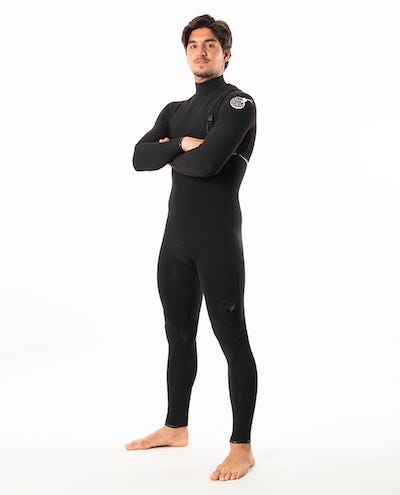
O’Neill Hyperfreak 3/2mm Zipless
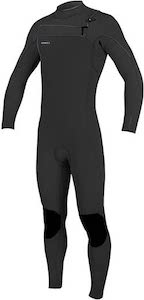
Sooruz 2/2 Zip-Free GURU PRO
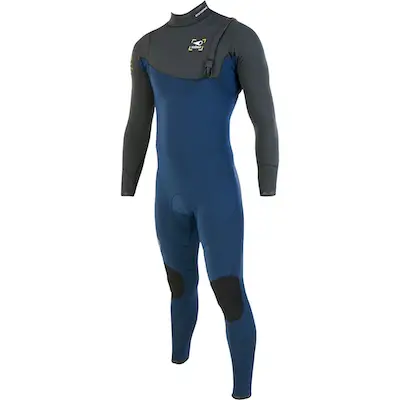
Ripcurl E7 Limited Edition E-Bomb 3/2mm Zip Free Wetsuit
This wetsuit claims to be the most flexible of all 25% more flexible than a normal wetsuit. It seems to be limestone neoprene but there are no official results of any elongation tests. So it’s hard to prove that you have the most flexible wetsuit.
O’Neill HYPERFREAK 3/2MM COMP ZIPLESS FULL WETSUIT
Also, O’Neill claims to have one of the most flexible wetsuits. They call it TB3X – TECHNOBUTTER 3X pre-stretched neoprene (limestone neoprene). But no results of their elongation test or stats in any way.
Sooruz Fullsuit 2/2 Zip-Free GURU PRO
This is the only suit that is not limestone-based but oyster-based. Even though it is a new and different material it says it has the same flexibilities as limestone neoprene. But also no results from an elongation test.
It’s hard to say which wetsuit is the most flexible but these three above claim to have a really flexible wetsuit. You will notice that they are all zipless or zip-free wetsuits because the zipper in a wetsuit will limit the amount of stretch in a wetsuit. As the zipper has no stretch at all.
Summary
What can we say about the stretch of a wetsuit? Every wetsuit has to be flexible to make it possible to move in. Some wetsuits are less flexible (under 100% elongation) and some are more flexible (200% elongation). If you stretch the wetsuit a couple of times to its maximum it will be permanently stretched. It will be a bit wider but also loses some flexibility. Not all brands are transparent about the elongation (stretch) of their wetsuit. What is kind of an important factor to decide which wetsuit you want to buy. Hopefully, in the future, all brands will share their elongation percentages to make a better decision.

